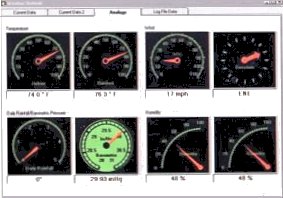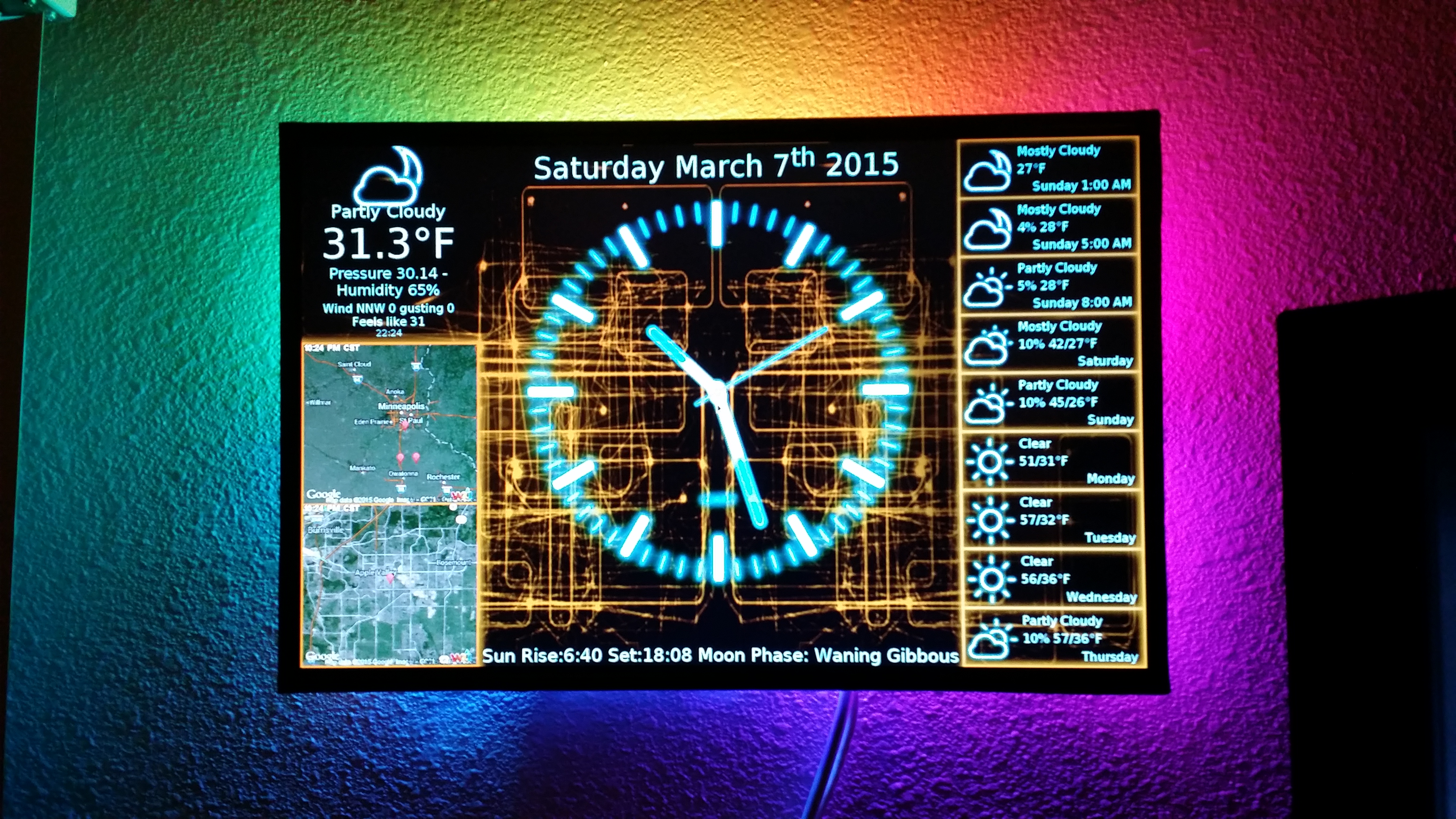
#PEET BROS WEATHER DISPLAY RASPBERRY PI SERIES#
Honestly had support for Timescale not been there, I probably would have used InfluxDB because I really don’t know of anything that visualizes time series data as well as Grafana. VisualizationĪnother really big win for me is that Grafana just recently added support for PostgreSQL and Timescale, allowing me to use my favorite visualization tool. This includes things like rain bucket tips, and battery voltage readings from the remote stations. In the end I actually decided to use both models, data which is highly correlated gets it’s own wide table as you can see above with the outside_light table.ĭata that is not very correlated, goes into the narrow table. However, it’s not as flexible, requiring an alter statement if we want to add a new measurement type to the table. In this model, we would insert all the values we read into one row with the same timestamp, this makes correlation trivial, and it reduces our row count drastically. I’m not saying another solution isn’t better for you or your situation, but for me Timescale is fantastic.Īs far as structure goes, I waffled a long time about storing data in a narrow table vs a wide table.Ī narrow table model being something like: This is the problem that Timescale solves by auto partitioning your table for you behind the scenes. After having used both traditional relational databases and NOSQL type databases for time series data I have always preferred relational databases in every way EXCEPT the part where they really struggle when you start getting billions of rows in a table. Ultimately I decided on Timescale, there were several reasons for this, most of which you would read on their website. Over the years I’ve had a lot of time to think about storing time series data, and I’ve had the experience of using several different solutions for doing so.


The Adafruit Feather 32u4 RFM69HCW would be the core of the remote stations and corresponding standalone radio which would be wired to a Raspberry Pi inside the house. Ultimately I decided on a 900MHz packet radio setup which would cover the range required while still meeting the power requirements to run off a battery and solar cell.

This distance and low power requirement ruled out Wifi, Bluetooth, and Xbee type radios.
#PEET BROS WEATHER DISPLAY RASPBERRY PI INSTALL#
This meant I needed to install them a few hundred yards from my house and in separate locations. I wanted to install the anemometer in a location that would get the best wind, and what I call the “base” weather station in an area that got the most sunlight and was also slightly shielded from the wind to help with rain collection. I also decided it might be interesting to measure light intensity and UV intensity. Additionally I looked to see what other sensors I could add, the obvious ones being temperature and humidity, and barometric pressure.

So given that I already had these parts, I decided to make good use of them. The anemometer never left the box it came in… It turns out I love ordering parts with great intentions but don’t always get around to using them too quickly. The rain gauge managed to get installed at my last house but I never connected it to any form of actual data logger, just the little LCD display it came with. Hopeful that this would be a forever home, I wanted to have environment data stored from the beginning (or as close as possible).įast forward about six months, $1000 and 200 hours of work later:Ī few years ago I picked up a Rainwise rain gauge and a Peet Bros anemometer. Recently I bought a new house and decided I was finally going to make building a weather station a priority.


 0 kommentar(er)
0 kommentar(er)
